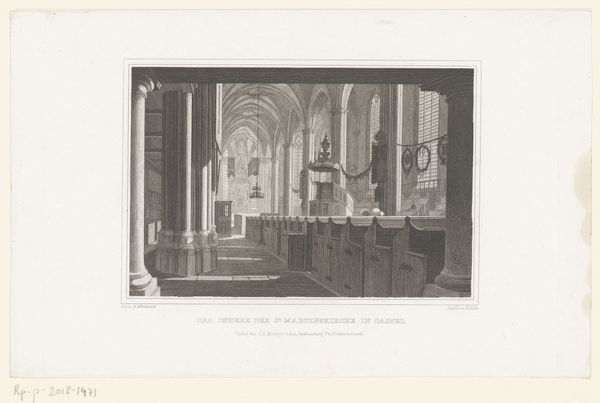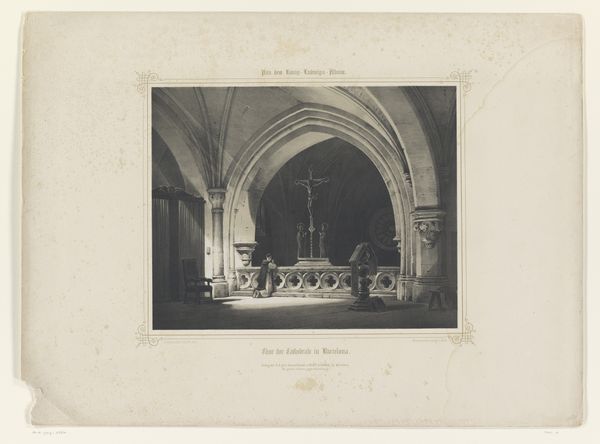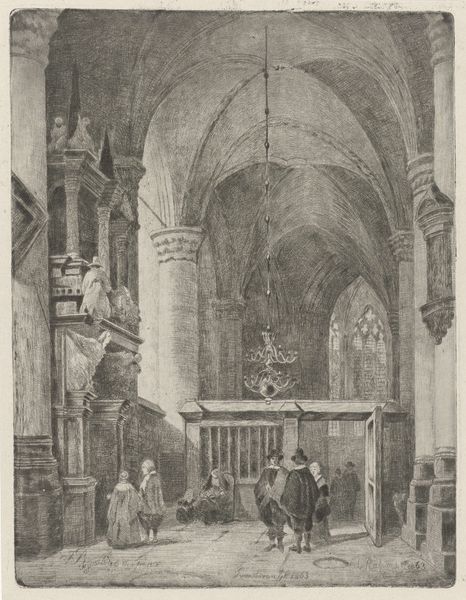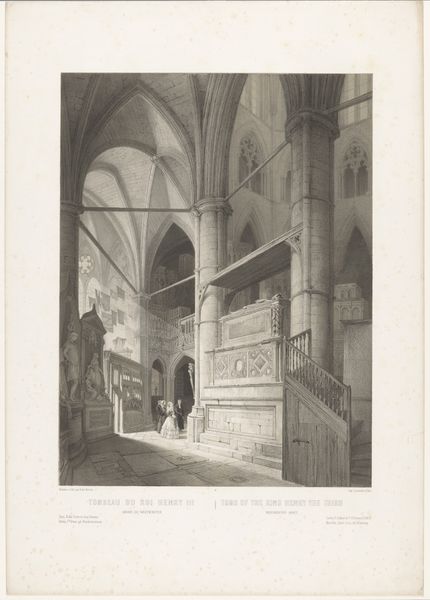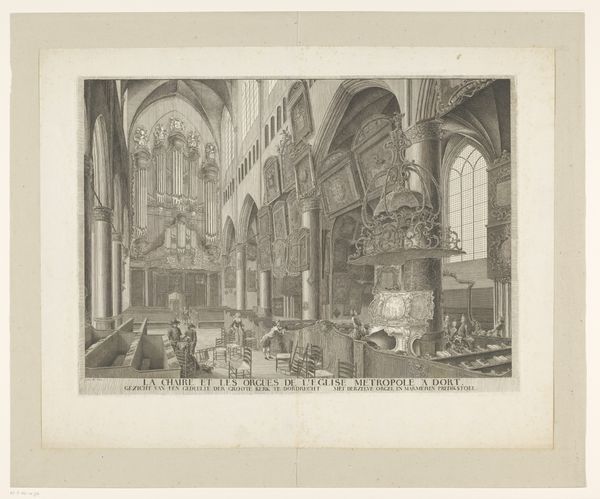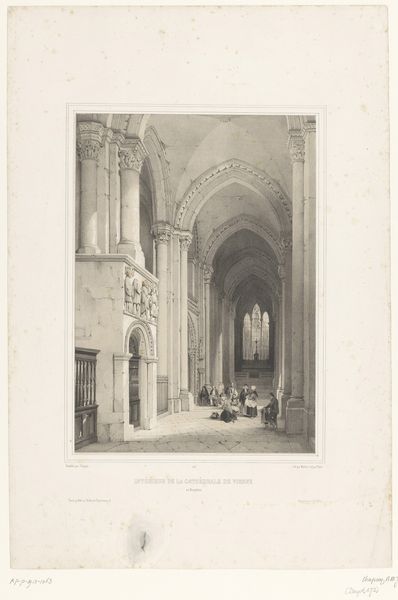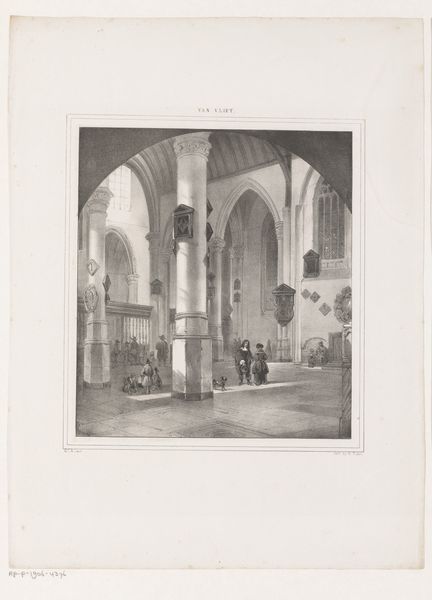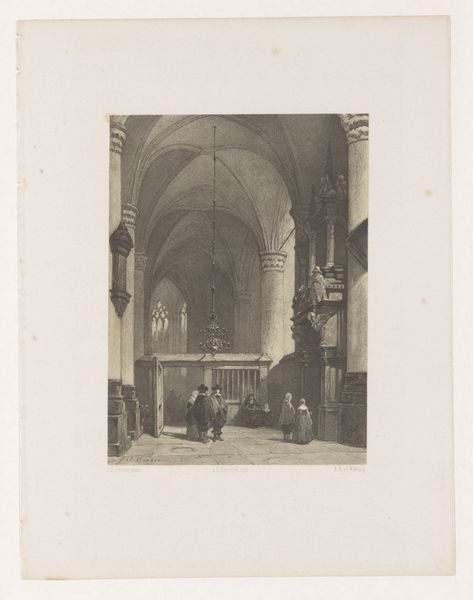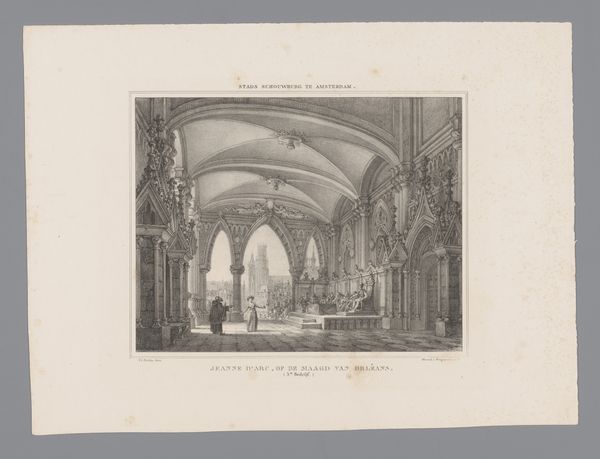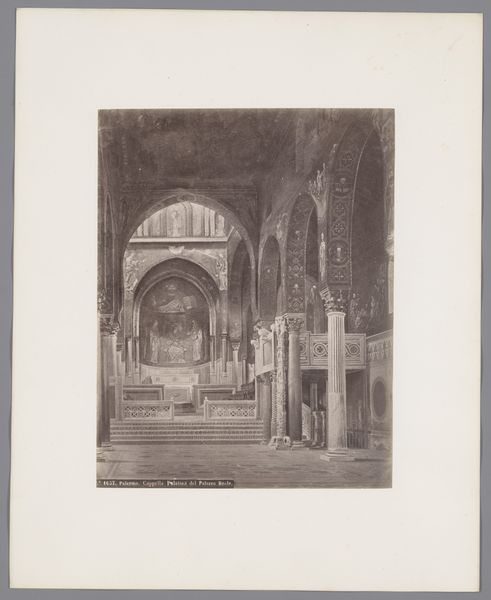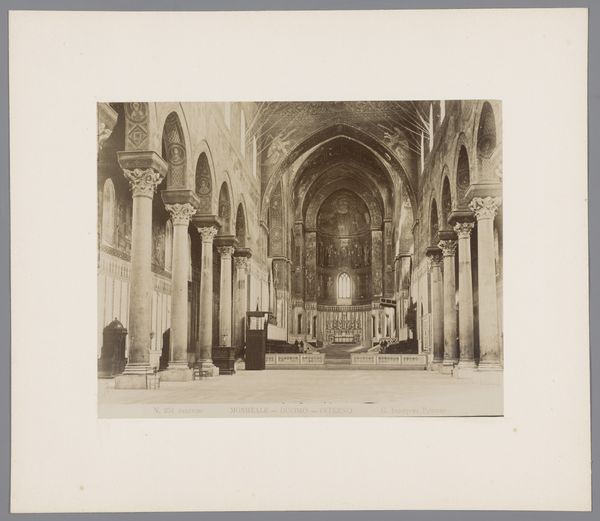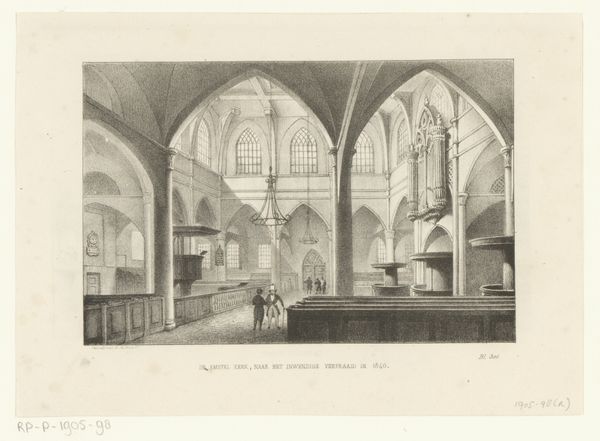
Interior of a Church (Liber Studiorum, part XIV, plate 70) 1819
0:00
0:00
drawing, print, etching, engraving
#
drawing
#
water colours
# print
#
etching
#
human-figures
#
landscape
#
romanticism
#
human
#
genre-painting
#
history-painting
#
academic-art
#
engraving
Dimensions: plate: 7 x 10 11/16 in. (17.8 x 27.1 cm) sheet: 8 7/16 x 12 in. (21.4 x 30.5 cm)
Copyright: Public Domain
Editor: So here we have J.M.W. Turner's "Interior of a Church," from 1819. It's an etching and engraving, rendered in this almost sepia tone. It's quite dark, almost somber. What do you make of it? Curator: Immediately, I’m drawn to the materiality of the print itself. Etching and engraving are laborious processes. Consider the labor embedded within the creation of multiple, identical images. Turner’s Liber Studiorum sought to democratize art through prints. What implications might that have for the consumption and understanding of art among the rising middle class? Editor: That's interesting, the idea of making art more accessible. I hadn’t considered that. Curator: Think about the role of the church as a site of social and economic power. Look at how the light catches the architectural details. Could that be highlighting how these grand structures were constructed by human labour and sustained by societal resources? How does the print, a reproducible commodity, challenge the unique status typically afforded to architectural marvels and the church itself? Editor: It almost feels like Turner is subverting expectations – showing the church, usually a place of spiritual focus, as a product of material processes. Curator: Exactly. Consider the paper itself. Where did it come from? Who produced it? How does its presence alter the relationship between artist, institution, and consumer? This artwork shows not only the beauty within the church, but is equally rooted in its production, distribution, and consumption as a cultural object. Editor: I'm starting to see this less as a simple depiction and more as a complex statement about art, labor, and society in the 19th century. It’s amazing how looking at the materials can unlock a completely different perspective. Curator: Indeed. By paying close attention to process, materials and the social context, it enriches our reading, and in turn reveals much deeper meanings.
Comments
No comments
Be the first to comment and join the conversation on the ultimate creative platform.
